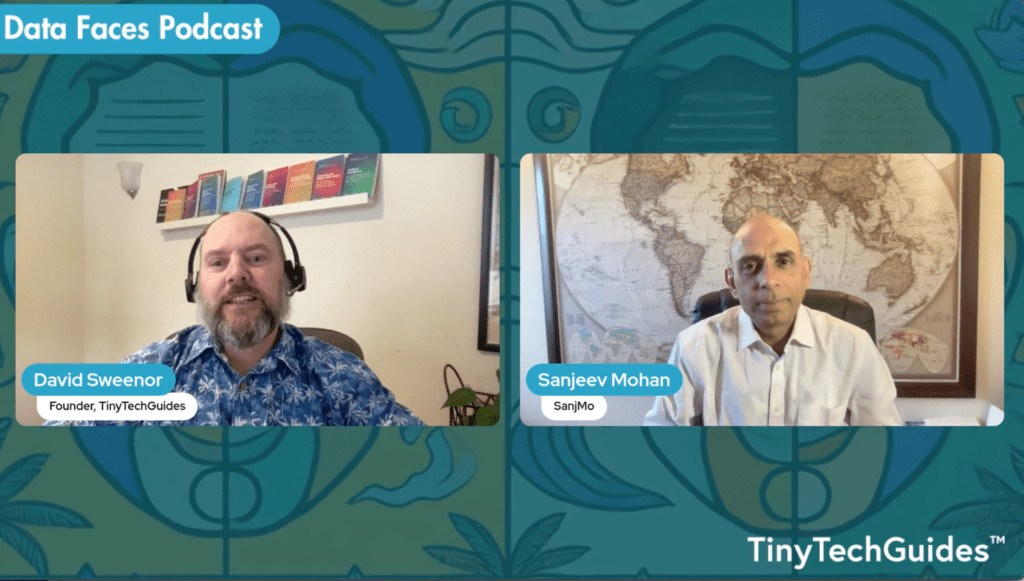
Introduction
As the sizzle of generative AI wanes, organizations realize that artificial intelligence (AI) is not the panacea they once thought. Although there is tremendous upside to adopting AI technology, the systems are complex, expensive, and risky. Even though generative AI systems can seemingly generate unlimited content, business and IT leaders need to implement generative AI on a use-case-by-case basis. And on top of that, their abilities (or skills) are relatively narrow. Whether embedded in a customer service chatbot or summarizing medical records, each application is unique and requires development, maintenance, monitoring, guardrails, training, and new organizational processes to ensure efficacy, accuracy, and robustness.
One critical issue that companies must address is how to add their organizational data to provide context to the large language models (LLMs). Techniques like clever prompt engineering, fine-tuning, and retrieval augmented generation (RAG) can all help reduce ‘hallucinations’—the generation of incorrect or misleading information—and inform the output responses.
See my previous article, Generative AI’s Force Multiplier: Your Data, for more detail.
Assuming that you have mapped out use cases, built a business plan, and have the requisite skills, technology, metadata, and data for your generative AI implementation, the question that naturally arises is there a way to get more from less? Is designing and implementing an AI system that can handle more complex tasks possible?
Of course, what’s at stake? Artificial General Intelligence (AGI). Here’s Microsoft’s perspective, notice AI agents are a critical component of the tech stack.[1]

AI agents represent the next development of AI, with the ability to act autonomously and solve more complex problems. This article explores AI agents, their applications, benefits, and the risks businesses must navigate as they adopt this transformative technology.
What Are AI Agents?
AI agents are software entities that use AI to perceive their environment, make decisions, take actions, and achieve goals autonomously. Unlike traditional software applications that serve as user tools, AI agents are designed to complete tasks with minimal human intervention.
AI agents are software entities that use AI to perceive, make decisions, take actions, and achieve goals autonomously.
Why are AI agents needed?
- AI agents can capture business value that current AI models cannot. Current AI models, like LLMs, cannot act autonomously. AI agents, on the other hand, are designed to dynamically interact with their environment to achieve goals.
- AI agents can automate complex tasks that are too complex for traditional rule-based systems. For example, AI agents can automate customer service tasks, such as analyzing customer complaint emails and processing them according to company policies.
- AI agents can smooth processes for businesses and help them be more efficient and productive. For example, an AI agent could analyze a to-do list and execute tasks like sending calendar invites or emails.
- AI agents can improve the customer experience. AI agents can provide customers with more personalized and engaging experiences. For example, a retailer could use an AI agent to provide customers with 24/7 access to product information, answer questions, and process returns.
According to Gartner, AI agents exhibit the following characteristics, which lie on a spectrum–from limited, to human-like.[2] The five dimensions include:
- Adaptability: Adjusting behavior based on the environment
- Proactiveness: Anticipating scenarios and taking strategic actions
- Complexity of goals: Managing multiple interrelated objectives
- Complexity of environment: Navigating uncertain and intricate environments
- Degree of autonomy: Operating independently with minimal human intervention
Critical Components of AI Agents
Several interconnected technologies power AI agents:
Large Language Models (LLMs)
LLMs, such as Google’s Gemini and OpenAI’s GPT-4, are the “brains” behind many AI agents; these models enable:
- Natural Language Understanding: LLMs can comprehend not only the content of sentences but also complex linguistic features like context, tone, sarcasm, and jargon. This allows them to understand instructions in natural language and make sense of the information they encounter.
- Language Generation: LLMs can generate fluent and coherent text and audio, adapting their style and tone to suit different contexts and voices.
- Reasoning and Problem-Solving: LLMs are capable of complex reasoning. They can solve problems that require understanding the context and applying knowledge learned during training.
Tools, Memories, and Plans

While LLMs provide the foundation for AI agents, additional components are necessary to build a fully functional agent.
- Tools: AI agents use tools through APIs (Application Programming Interfaces) to interact with systems and services, enabling them to retrieve information and perform actions in the real world. For example, an AI agent could use tools to access a customer’s order history in an order management system, process a return, or change a subscription plan.
- Memories: AI agents utilize different types of memory to perform tasks effectively:
- Working Memory: This allows agents to keep track of ongoing conversations and tasks, similar to how humans maintain short-term memory.
- Long-Term Memory: This gives agents access to a vast store of knowledge, which can be used to answer questions and solve problems. For example, a retailer’s AI agent might have access to detailed information about its products, warranty policies, and company history.
- Plans: These procedural instructions guide AI agents in completing complex, multi-step tasks. They ensure that the agent performs steps in the proper order and stays on task.
Multiagent Systems
Multiagent systems (MASs) involve multiple AI agents interacting and collaborating to achieve a common goal. MAS benefits include:
- Tackling Complex Challenges: MASs can address problems beyond individual agents’ capabilities by distributing tasks and leveraging the diverse strengths of multiple agents.
- Enhanced Adaptability and Scalability: MASs are highly adaptable and can adjust to changing environments or objectives more effectively than single agents. They can also be scaled to handle large and complex tasks by adding more agents to the system.
- Increased Robustness: MASs exhibit greater robustness as they are not reliant on a single point of failure. If one agent fails, others can compensate and continue operating.
Examples of Multiagent Systems:
- Robotics: Swarms of robots or drones can work together in warehouses to optimize operations, perform search and rescue missions, or monitor environments.
- Generative AI: Multiple LLM agents can collaborate to tackle complex reasoning tasks or employ advanced reasoning approaches like “train of thought” or “tree of thought.”
Applications and Use Cases
AI agents can be used for a variety of applications, including:
- Supply Chain Optimization and Automation: AI agents can be utilized to optimize various aspects of supply chain management, including scheduling, planning, routing, and overall optimization.[3]
- Dynamic Network Optimization in Telecom: AI agents offer benefits in the telecom industry by optimizing networks and enabling efficient fault detection.[4]
- Generating Creative Assets: AI agents can be employed in human-led processes to generate creative assets. For instance, they can create updated marketing materials by incorporating the latest product enhancements, customer needs, and previous campaign engagement to produce multimodal media assets.[5]
- Automating Customer Service, Streamlining Operations, Personalizing Marketing, and Sales: AI agents, particularly those powered by LLMs, excel in tasks involving natural language, making them well-suited for automating customer interactions.[6] AI agents can be used to develop chatbots that provide support, answer questions, and guide customers through transactions. They can also personalize marketing and sales efforts by analyzing customer data and tailoring recommendations.
Real-World Examples
- WebGPT is a language model that has been fine-tuned to answer questions using a text-based web browsing environment.[7] It can access and process information from the internet to provide comprehensive answers to user queries. WebGPT showcases the potential of AI agents to augment human capabilities in information retrieval and knowledge synthesis.
- SayCan is an example of how AI agents can operate in the physical world by combining language models with robotic affordances. SayCan uses LLMs to provide high-level semantic knowledge about tasks, while robotic affordances determine what actions are feasible in a given environment.[8] This approach allows robots to understand and execute complex instructions in natural language.
Benefits for Businesses
Organizations that successfully implement AI agents can increase operational efficiency, reduce costs, enhance customer satisfaction, and improve decision-making capabilities. AI agents can automate complex tasks, optimize processes, and work around the clock with minimal human intervention, improving overall productivity.
Deploying AI agents also frees human employees to focus on higher-value strategic and creative work. Rather than getting bogged down in repetitive manual tasks, staff can concentrate on innovation, problem-solving, and relationship building–where human ingenuity and emotional intelligence are irreplaceable. Human capital optimization is a crucial advantage in today’s knowledge-driven economy.
Risks and Challenges
While AI agents offer significant potential, organizations must understand and mitigate the associated risks and challenges, which include:
- Unreliable Outputs: AI agents, particularly those powered by generative AI, can produce inaccurate, biased, or even fabricated information (hallucinations). These unreliable outputs can have serious consequences, especially in decision-making processes, potentially leading organizations to make faulty or illegal decisions.
- Intellectual Property (IP) Infringement: AI agents may inadvertently use or reproduce copyrighted material, exposing organizations to legal liabilities related to IP breaches. This risk arises from the vast datasets used to train AI, which may contain copyrighted content that is not clearly marked as such.
- Cybersecurity Threats: AI agents’ autonomous and interconnected nature makes them potential targets for malicious actors. Hijacking or exploiting AI agents can lead to data breaches, financial fraud, and disruption of critical operations.
- Regulatory Compliance: As AI agents become more involved in complex processes, ensuring compliance with existing regulations becomes increasingly tricky. For instance, AI-powered facial recognition software used by agents can lead to wrongful accusations and privacy violations if not properly managed and audited.
To address these challenges, implement:
- Human Oversight and Clear Guardrails: While AI agents are designed for autonomy, human oversight remains crucial to prevent unintended consequences. Organizations must establish clear guidelines and protocols for agent activities, setting boundaries for their decision-making and actions to ensure ethical and responsible use.
- Robust Security Measures: Protecting AI agents from cyber threats requires investing in advanced security protocols. This includes implementing end-to-end encryption, multifactor authentication, and rigorous access controls to safeguard agent systems and the sensitive data they handle.
- AI Trust, Risk, and Security Management (AI TRiSM)[9]: Building trust in AI systems is paramount for successful agent deployment. AI TRiSM focuses on ensuring AI agents’ governance, trustworthiness, fairness, reliability, and data protection. This includes implementing mechanisms for model transparency, content anomaly detection, adversarial attack resistance, and rigorous data privacy protocols.
The Future of AI Agents in Business
The evolving landscape of AI agent technology presents a compelling case for businesses to begin exploring and experimenting with these systems. Key advancements include:
- Self-Improvement and Adaptation of AI Agent Prompts: A prime example is Promptbreeder, a novel approach where AI agents iteratively refine their prompts to improve their performance on specific tasks.[10] This self-referential self-improvement mechanism allows agents to adapt to different domains and challenges, continuously enhancing their capabilities without manual intervention.
- Synergy between Reasoning and Acting: ReAct, short for “Reason + Act,” represents a significant leap in AI agent capabilities by seamlessly integrating reasoning and decision-making processes.[11] This approach allows agents to approach problems more like humans, formulating plans, taking actions, observing outcomes, and adapting their strategies based on feedback from their environment. This tight coupling of reasoning and acting makes AI agents more versatile, robust, and capable of tackling complex, real-world problems.
These advancements, coupled with the ongoing development of foundational AI models like LLMs and large action models (LAMs), fuel the growth of AI agent capabilities. By integrating these models, AI agents can achieve complex actions, communicate effectively with users, and learn from their experiences. For example, techniques like Chain-of-Thought Prompting and Plan-and-Solve Prompting enable agents to break down complex tasks into smaller, more manageable steps, significantly improving their reasoning and problem-solving abilities.
Businesses that delay exploring and experimenting with AI agents risk falling behind competitors. As AI agents become more sophisticated, they will redefine workflows across various industries, from customer service and sales to logistics and operations. Early adoption allows businesses to gain valuable experience, refine their AI strategies, and build a competitive edge by automating processes, improving decision-making, and creating new products and services.
Conclusion
AI agents represent a shift in businesses’ operations, promising efficiency, agility, and innovation. From optimizing supply chains to facilitating enterprise-wide collaboration, AI agents have the potential to transform industries and deliver economic value.
To succeed in the age of autonomous AI, business leaders must proactively harness its potential while vigilantly managing associated risks. This requires integrating AI agents into strategic planning, exploring multiagent systems, and prioritizing robust security, privacy, and ethics governance measures.
By embracing responsible innovation—implementing clear guardrails while continuously experimenting and learning—organizations can navigate the challenges and reap the rewards of this transformative technology. The future belongs to enterprises that responsibly harness the power of AI agents, and that future is unfolding now.
If you enjoyed this article, please like it, highlight interesting sections, and share comments. Consider following me on Medium and LinkedIn.
Please consider supporting TinyTechGuides by purchasing any of the following books.
- Generative AI Business Applications: An Exec Guide with Life Examples and Case Studies
- Artificial Intelligence: An Executive Guide to Make AI Work for Your Business
- The CIO’s Guide to Adopting Generative AI: Five Keys to Success
- Mastering the Modern Data Stack
- Modern B2B Marketing: A Practioner’s Guide for Marketing Excellence
[1] Huang, Qiuyuan, Naoki Wake, Bidipta Sarkar, Zane Durante, Ran Gong, Rohan Taori, Yusuke Noda, et al. 2024. “Position Paper: Agent AI towards a Holistic Intelligence.” ArXiv.org. February 28, 2024. https://doi.org/10.48550/arXiv.2403.00833.
[2] Coshow, Tom, Erick Brethenoux, Gary Olliffe, Pieter den Hamer, Leinar Ramos, and Avivah Litan. 2024. “Innovation Insight: AI Agents.” Gartner Inc. https://www.gartner.com/document/5332663.
[3] Coshow, Tom, Erick Brethenoux, Gary Olliffe, Pieter den Hamer, Leinar Ramos, and Avivah Litan. 2024. “Innovation Insight: AI Agents.” Gartner Inc. https://www.gartner.com/document/5332663.
[4] Coshow, Tom, Erick Brethenoux, Gary Olliffe, Pieter den Hamer, Leinar Ramos, and Avivah Litan. 2024. “Innovation Insight: AI Agents.” Gartner Inc. https://www.gartner.com/document/5332663.
[5] Heikkilä, Melissa. 2024. “What Are AI Agents?” MIT Technology Review. July 5, 2024. https://www.technologyreview.com/2024/07/05/1094711/what-are-ai-agents/.
[6] “AI Agent.” 2024. Learn.microsoft.com. July 3, 2024. https://learn.microsoft.com/en-us/azure/cosmos-db/ai-agents.
[7] Kapoor, Sayash, Benedikt Stroebl, Zachary S. Siegel, Nitya Nadgir, and Arvind Narayanan. 2024. “AI Agents That Matter.” ArXiv.org. July 1, 2024. https://doi.org/10.48550/arXiv.2407.01502.
[8] Wei, Jason, Xuezhi Wang, Dale Schuurmans, Maarten Bosma, Brian Ichter, Fei Xia, Ed Chi, Quoc Le, and Denny Zhou. 2022. “Chain of Thought Prompting Elicits Reasoning in Large Language Models.” ArXiv:2201.11903 [Cs], October. https://arxiv.org/abs/2201.11903.
[9] Perri, Lori. 2023. “What It Takes to Make AI Safe and Effective.” Gartner. September 5, 2023. https://www.gartner.com/en/articles/what-it-takes-to-make-ai-safe-and-effective.
[10] Fernando, Chrisantha, Dylan Banarse, Henryk Michalewski, Simon Osindero, and Tim Rocktäschel. 2023. “Promptbreeder: Self-Referential Self-Improvement via Prompt Evolution.” ArXiv.org. September 28, 2023. https://doi.org/10.48550/arXiv.2309.16797.
[11] Yao, Shunyu, Jeffrey Zhao, Dian Yu, Nan Du, Izhak Shafran, Karthik Narasimhan, and Yuan Cao. 2023. “ReAct: Synergizing Reasoning and Acting in Language Models.” ArXiv.org. March 9, 2023. https://doi.org/10.48550/arXiv.2210.03629.



